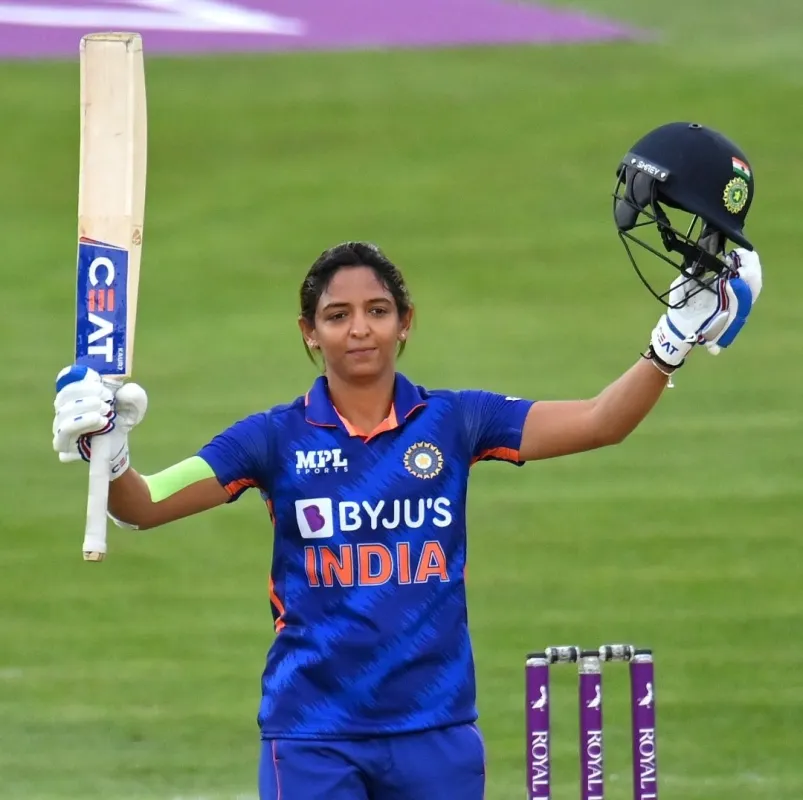The question regarding the identity of India's No. 3 batter has been clarified as the team heads into the T20 World Cup. Amol Muzumdar, the head coach of the Indian women's cricket team, has indicated that Harmanpreet Kaur will occupy this crucial batting position during the tournament, following a period of strategic contemplation. Muzumdar confirmed that this decision was reached long before the team departed for the World Cup, indicating that internal discussions during the pre-tournament camps in India had already established Kaur's role.
The context behind this choice reveals significant insights into the team dynamics and selection process. The role of No. 3 has frequently changed hands in recent times, largely due to the injury of Yastika Bhatia, who was originally considered a strong candidate for this position. Following her injury while on tour in Bangladesh, Bhatia missed crucial matches, thereby opening the door for Kaur’s reinstatement in the batting order.
Despite her performance in the warm-up matches—where she scored 10 and 1—Kaur’s selection as No. 3 illustrates a calculated decision aimed at maximizing her batting capabilities. Batting at a position lower down the order, such as No. 4 or 5, has often placed Kaur in situations where she has needed to accelerate scoring rapidly. This tendency is underscored by her strike rate of 94.09 in T20 innings since 2022, which indicates a struggle to leverage her power-hitting abilities when required to catch up against a rising required run rate.
Muzumdar's tenure as coach has seen several players tried out in the No. 3 position. Among these, Dayalan Hemalatha had the longest run, but her overall output of 139 runs in seven matches limited her prospects. Other candidates like Sajeevan Sajana and Uma Chetry were given short stints, but none proved entirely convincing. Although Jemimah Rodrigues is another potential option, her proficiency against spin makes her a better fit for the No. 4 or 5 positions, where she can effectively exploit field placements due to her touch play.
Rodrigues has shown a notable performance increase in her limited innings as a No. 5 batter, averaging 143.81 in 10 innings. In contrast, her performance at No. 3 reveals a marked drop to a strike rate of 110.19 across a broader sample size of 59 innings. This analysis highlights the challenges players face when adapting to different batting positions.
In this context, the Women's Premier League (WPL) has emerged as an influential factor in shaping the current squad's abilities. Muzumdar has noted the importance of having a strong backup player structure in place, emphasizing how players like Sajana have gained valuable experience through tours aimed at their development. The collaboration between the national cricket team and the National Cricket Academy (NCA) has been instrumental in fostering player growth, providing continuous feedback that enhances player performance.
The WPL has been critical in identifying new talent, with players like Shreyanka Patil gaining recognition for their standout performances. Patil, who became the highest wicket-taker during her team’s successful campaign earlier this year, has quickly established herself as a key death bowler, known for her variations and ability to maintain pressure throughout different phases of a match.
Equally, Radha Yadav, who experienced a year-long hiatus from the squad after the previous edition of the tournament in South Africa, has made significant strides as a result of her WPL involvement. She, along with S Asha, another emerging talent, has utilized the platform to showcase their skills, thus accelerating their integration into the national team.
Moreover, the WPL has positively impacted the fitness standards of the players, facilitated by close monitoring and structured off-season camps. These initiatives, which include the use of an Athlete Monitoring System (AMS), allow for comprehensive evaluation of workloads and performance metrics, ensuring players maintain peak physical condition.
Muzumdar has placed a high priority on improving fielding capabilities as well. His coaching philosophy includes tailored fitness programs designed to boost individual abilities and team readiness. The structured approach aims to enhance fielding performance, a crucial aspect that can significantly influence match outcomes.
The strategic decisions regarding player selection and batting order reflect a broader aim to prepare the Indian team for the challenges of the T20 World Cup. As the team gears up for its opening match against New Zealand, all eyes will be on how these decisions translate into performance on the field. The emphasis on player development and tactical deployment under Muzumdar’s leadership indicates a thoughtful strategy that prioritizes adaptability and strength to face diverse challenges. The outcomes in the coming matches will not only reveal the efficacy of these plans but also the team's readiness to compete at the highest levels in women's cricket.

